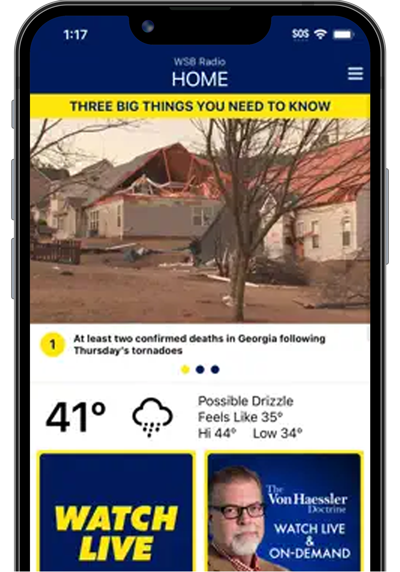It can be hard to keep up with every fantasy football draft strategy available, and even harder to make sense of them all in order to choose the one that you like best. Thankfully, Antonio Losada has a one-stop shop for all things strategy below.
Zero RB
In a nutshell: You load up on WR1 and pick your QB1 relatively early, only target rushers from the middle rounds on.
How to approach it
Start the draft by picking the best available WRs for the first four rounds, then add upside rushers along with an opportunity QB/TE.
This strategy is focused on fading rushers in favor of wide receivers exclusively. Other strategies focused on getting a "Hero TE/QB" are discussed elsewhere in this guide, so if you want a true Zero RB approach, then you want to focus on getting as many WR1 as you can early. Here's Jorge Martin's even deeper dive into the ZeroRB strategy.
It’s not crazy to think about building a team boasting three wideouts with WR1-level upside depending on your draft position. If you’re lucky to find a top-three QB available in the fourth round, you’d have hit the jackpot. If not, you can just keep adding receivers. This means fading tight ends a bit too, as you’d probably enjoy better outcomes from the players available at WR in the middle rounds than you’d do by drafting a tight end outside of the absolute best early.
This strategy could also be used along with some stacking if you find a good WR-QB pairing part of a strong offense (think Stefon Diggs early, Josh Allen if he slips).
Drafting a quarterback with some rushing prowess even later (think Daniel Jones or Deshaun Watson) to compensate for the lack of an RB1 could also be helpful.
Main drawbacks: You are going to have to draft and start running backs who probably won't be clear-cut RB1-type players in their team's offense and will split the carries/targets with some teammate(s). Running backs on franchises expected to use an RBBC approach (Jets, Commanders, Lions, Ravens) should be available later and end up earning bigger roles as the season gets deeper, but you're betting on an unknown nonetheless.
Hero RB
In a nutshell: Pick the best rusher with your first pick, fill the non-RB positions and only then/later add upside rushers.
How to approach it
Start with the best RB on the board, then QB/WR1, load on WRs, adding RBs as opportunities emerge late. Things are very simple if you get any of the top two picks as you’ll have one/both of the consensus-best rushers available in Christian McCaffrey and Austin Ekeler, no matter what.
Once you have that RB1 spot secured, then you can completely forget about drafting any other running back for a good while. Depending on how the draft develops and your draft position, there is an ideal scenario in which you would be able to add either TE1 Travis Kelce or QB1 Patrick Mahomes to your squad. Even if you can’t land any of those two players, you can still get a WR1 to kick off the rest of your draft after you get your main rusher.
Odds are some running backs with an ADP in the 50s slip and leak into later rounds, so you will still be able to land some interesting players such as J.K. Dobbins, Dameon Pierce, Dalvin Cook or Alvin Kamara, if your league mates are asleep. Keep in mind that you shouldn’t chase those rushers, though. Just take advantage of the opportunity if it pops up, but stay focused on loading your roster with the best-available WRs and an early TE/QB.
Main drawbacks: The downside of this strategy is that you'd be relying too much on upside-rushers and late-round picks to fill the backup RB slot of your squad while also using a wideout in your flex spot.
Your RB1’s bye week will be tough to deal with and you’ll be forced into keeping an eye on the waiver wire weekly, if not daily, to keep your running back rotation as strong as possible while still betting on hard-to-trust players with high levels of volatility.
QB Early
In a nutshell: Pick a top-three QB (Mahomes/Hurts/Allen), then build a balanced roster exploiting possible opportunities such as stacking teammates.
How to approach it
Set it and forget it, folks. You’re not going to have to think about dealing with cutting your quarterback at any point through the season or streaming the most important position in fantasy football in the recent past. A surefire fantasy QB1 these days (and there are only three/four of them) guarantees you nearly 25+ FPPG every week, and that’s something not many players can do.
You can’t go wrong with any of the top-tier quarterbacks and in most drafts, all of them will be available whenever you are slotted to make your first pick. Once you have your QB1 you can proceed to build a balanced roster following different philosophies knowing that you already have secured the most important piece of your team.
You can stack WR1-level players with Josh Allen (Stefon Diggs) and Jalen Hurts (A.J. Brown) and if you’re lucky you might stumble upon TE1 Travis Kelce to stack with Mahomes, though that latter scenario would be much more feasible if you start by drafting Kelce instead of Mahomes (more on that strategy below).
If you get a rushing QB (Allen/Hurts) you might want to prioritize pass catchers and if you land Mahomes then you should go the RB route early to land a star to play along with him. There are a ton of possibilities and paths to follow once you have your quarterback, though, you just try to get the best-available WR/RB for most of the rounds and only pick an early TE if Travis Kelce (second round)/Mark Andrews (third round) are available.
Main drawbacks: Not many. At the end of the day, you'd have lost the chance of landing a true WR1/RB1 but you'd be set with a QB1. Yes, running backs and (to a lesser extent) quarterbacks are indeed more prone to getting injured than wide receivers, but you just can't count on that on draft day, let alone when drafting one of the best players in the league.
Again, injuries can happen to anyone and are largely unpredictable. Aside from that, if you balance your roster from the second round on, you’ll be in good shape and you’ll only need to care about streaming your QB for a bye week while making some other waiver wire moves at the skill-position slots.
QB Late
In a nutshell: Fade QBs until the middle rounds while building a strong RB/WR/TE roster, then pick a QB with upside late/stream the position
How to approach it
Simply go with any star you can find available at the three skill-position slots while leaving a quarterback for late. Even if you own the last pick of the first round in your draft, you should still be able to get a WR1/RB1/TE1-level player. Go from there (depending on whom you choose) to build the rest of your squad.
Try not to pay a lot of attention to the quarterbacks getting off the board or staying on it for long; there’ll be time for picking one later, just don’t panic. And when the time comes to draft yours, perhaps looking at the one whose team has the strongest pass-catching unit might be a good way to approach the selection (Bonus: look for subpar team backfields not expected to get a lot of carries).
If you check the ADP values of some late-round quarterbacks, you’d be surprised to find names such as Aaron Rodgers, Daniel Jones and Kirk Cousins falling outside of the top 100 picks. That’s already more picks than starters you’ll have to name on your weekly team assuming you play in a standard league.
Also: there were six QBs in the top 10 at the position in 2023 with ADPs of QB11+. There were three in 2021 and 2020 and five in 2019 and 2018. Draft a quarterback late and reap the rewards even later!
Main drawbacks: Not hard to grasp: having Patrick Mahomes available weekly as your QB1 is definitely better than betting on Geno Smith having another career year, on Russell Wilson bouncing back or a rookie QB playing above expectations as a freshman. You won't be affected that much if your QB1, whoever that is, gets injured at any point because you will be in a good position with whomever is available through the waiver wire, but you're going to find yourself praying for boom performances and not bust-type ones every Sunday.
Vanity TE
In a nutshell: Pick the TE1 with your first pick (Kelce) (and you can then add another TE1 like Mark Andrews with your second pick if you want to go Extreme Vanity TE), then stack a teammate-QB or build a balanced roster around the star TE.
How to approach it
This season, this strategy is only applicable if you can kick your draft off by picking Travis Kelce. The Chiefs TE has finished as the TE1 in fantasy leagues in all but one of the last seven seasons and when he failed he still finished as the second-best player at the position.
Now, for the absolute Vanity/Extreme TE strategy, you can double down on tight ends to simply mess with the rest of your league mates and deplete them of landing another great player to fill the spot. This season, that means landing former 2021 TE1, Mark Andrews. It’s risky, but it can work.
I have run a few mock drafts and I haven't found it hard to close the first three rounds with a trio of Kelce, Andrews and QB Patrick Mahomes (or any of the other top three quarterbacks). That's a dream scenario, but it's not hard to pull off. The distance between Kelce's total fantasy points and those scored by the second-best TE is usually sizable, but the distance between the TE2 and the TE3 is often huge.
You’d be limiting your opponents a lot by removing the top two players at the position from the board and you can then proceed to build a balanced roster filled with all sorts of players at all positions as they come to you.
Main drawbacks: Getting Kelce (and stacking him with Patrick Mahomes if possible is great), but landing the prospective TE2 might not be that smart of a strategy to pursue considering other options on the table when you make that pick (in the second or third round).
The best overall position a TE2 has ranked in the past five years didn’t even crack the top-20 OVR. Meanwhile, most WR/RB drafted in the second round of most drafts — no matter the league type, structure and rules — would most probably be closer to the floors (and carry much less volatility) than the better of the second-best tight ends.
Health is also key and both Kelce (34 years old) and Andrews (misses games often; loaded offense) come with risks.
Streaming/Fade TE
In a nutshell: Fade all TEs until an opportunity emerges or pick one in the third-to-last round/stream the position based on weekly matchups.
How to approach it
Most fantasy GMs, unless they draft one of the supremely elite tight ends, will have to stream the position at some point or will just grow maddeningly frustrated as the season progresses and their starter at the TE position fails to reach the expectations they put in those guys when they first drafted them.
So, why throw away a mid-round pick by selecting a subpar tight end when you can simply neglect the position entirely, draft a last-round player as a stopgap/filler and then stream the best available option on a weekly basis?
In the last five seasons, at least one tight end finished inside the top 10 at the position while not getting drafted in most standard leagues (150+ ADP). Two of them did it last season (Evan Engram and Tyler Higbee), one in 2021 (Dalton Schultz), two more in 2020 and three and four respectively in 2019 and 2018.
Main drawbacks: The tight end position is so barren of fantasy talent outside of the surefire locks to finish inside the top five that there aren't many negatives when it comes to just fading the position. This is more of a philosophy than a strategy, but it's good to know about it and the risks you're assuming when you draft a tight end.
Also: don’t fall for the overhyped rookie TE. It’s a trap! (Looking at you, Dalton Kincaid).
ADP/Best-Value
In a nutshell: Never autodraft, but go with the flow and stay alert to hunt for emerging opportunities/players available past their consensus ADPs and valuations (Pro tip: build your own ranks/projections!). Think about potential draft-to-trade options, too.
How to approach it
The best-value strategy doesn’t put any real constraints on how you operate and what you should do at different stages of your draft. Simply put, you just take the best player available while keeping the roster reasonably balanced, and if at the end of the day that’s not the case or you’re lacking depth at some position, you work some trades to fix it.
This shouldn’t be misunderstood as pure autodrafting. That’s the worst thing you can do and I wouldn’t recommend it to the worst of my enemies. If you go simply by projections/ADP without studying at least a bit about what you’re putting together or having studied minimally the backgrounds and contexts of the players you’re getting, you’re probably going to find some ugly surprises shaping your roster after the final buzzer.
I just ran an autodraft simulation and I ended up with great players in isolation but it's not so enticing when checking their track record of missed games, past production, context and teammates, etc. That roster includes Amari Cooper, James Conner, David Montgomery, DJ Moore, AJ Dillon, Tyler Allgeier, Elijah Moore, Jeff Wilson Jr. and Rashod Bateman. It’s easy to find flaws in all of them.
Following a similar ADP/Best-Value strategy but this time, I followed along, and I ended up with Aaron Jones, Stefon Diggs, Jerry Jeudy (here's hoping he recovers soon), Keenan Allen, Diontae Johnson and even the GOAT K Justin Tucker with a 13th-round pick followed by Bateman in the 14th before it went all-defenses in the 15th.
I also decided to grab two TEs in George Kittle and Kyle Pitts, which offers a great opportunity for a trade with another GM who might have faded the position and instead has an abundance of WRs/RBs I can now look into trading for.
Using an ADP/Best-Value-based approach removes any constraints or hard rules you might be forced into following if you use any of the other strategies, while still leaving room to make some luxury picks (ex: I picked Ekeler, Mahomes and Diggs 1-2-3 in the aforementioned simulation) as well as drafting for upside when good opportunities pop up (Pitts, Johnson or Bateman with a last-round pick).
You can also draft a rookie here or there and even throw a dart toward one you’re not really interested in but that might convince other GMs affected by the novelty bias into completing a trade.
Main drawbacks: The truth is, there are no clear negatives in using this strategy as it's very fluid and adaptable to whatever situation you're experiencing at the different stages of your league's draft.
Perhaps, if anything, it’s worth noting that drafting for value might lead you to end up with a surplus of players at one position (see the example about drafting both TEs Kittle and Pitts) that you’d have to look into trading for other pieces after the draft is over.
That’s some extra work on your side, but one worth doing.
Similarly, you might have to work the waiver through the season if you land some upside-type players that end up busting or get injured early in the season, but that’s not really something strictly linked to this particular strategy either.








